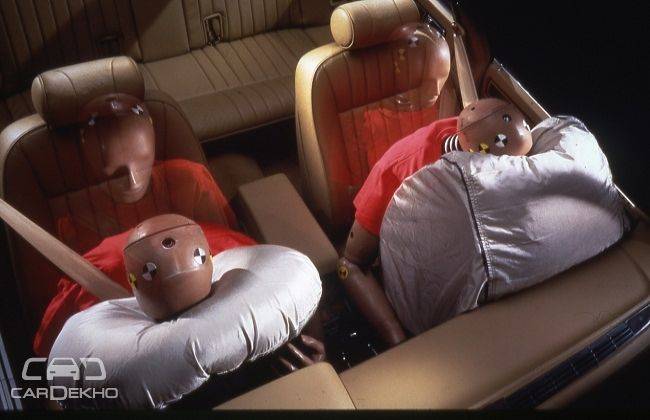Airbags save lives, but how?
Published On Mar 19, 2015 06:04 PM By Abhijeet
- 1.4K Views
- Write a comment
Recent times have seen a lot of attention towards vehicle crash safety. And airbags sit at the centrepiece of this much debated topic. Driving a car everyday has become an essential need than just leisure. Referring to the poor lighting and low surface quality of even our paved tarmac urban roads, safety does become a prime concern for cars.

Nothing is more important than you and your loved ones walking out of a screeching crash unharmed. With Indian population still largely sceptic on the usage of airbags in their cars, it is high time they become mandatory as they are the last line of defence in the event of an accident.

When a car witnesses an accident, airbags get active before you can blink you eyes. If you do have them equipped in your car, you must have noticed the ‘SRS Airbag’ symbol wherever they are located. The actual name for airbags is ‘Supplemental Restraint Systems’, which implies that they work in conjunction with the seatbelts to perform its duties.

What are airbags made of?
Airbags are made of stretchable fabrics to balloon up and are tightly packaged at desired location inside the cabin of your car. The most obvious location for placing them is the steering wheel and front of the dashboard. Other cars may have these airbags along the side of the vehicle.

They are compressed tightly to be confined in a small area, thus leaving space in the cabin. In the event of a crash, airbags fill up swiftly with air providing a cushioning system for the occupants so that they are not thrown or bounced around. Airbags may not be able to necessarily prevent total injury or death, but are extremely useful in cushioning vehicle occupants to avoid as much damage as possible.

The mechanism
Technically speaking, an airbags system has got three basic components. These are the bag itself, the sensor, and an inflation system.
Bag and sensor
The construction of an airbag is done using a fine gauge of nylon fibre. This is then squeeze folded into the steering wheel, dashboard or sometimes, door panel and roof rails above the door in some cars.

The sensor is responsible to initiate when the airbag is supposed to blow. The impact force generally needs an equivalent force of crashing into a brick wall at 15-25kmph. Sensors in newer airbag systems can also determine whether or not there is a person in the front passenger seat and whether or not the passenger has enough weight for the bag to be safely deployed. However you may turn it off manually if there are no passengers in the car.
Inflation system
The inflation system plays the vital role of inflate the airbag with air. A combination of potassium nitrate (KNO3) and sodium azide (NaN3) combines to form nitrogen gas. This hot discharged gas inflates the bag at a speed of roughly 300kmph. Instantly the gas is dispersed through fine holes on the inside of the airbag, causing it to deflate.

This entire process from judging to deployment takes a dazzling 1/25th of a second. Also you must have noticed thin white smoke at deployment in crash tests. This is cornstarch or talcum powder used within the airbag storage system to keep everything flexible and non-sticky smooth functioning of the system.

Historically speaking, airbags were originally developed to replace seatbelts in a car. Ford worked on the production versions in the 1970s but this safety technology did not gain much traction till the late 1980s. It wasn't until the mid-1990s that at least two airbags were standard in most cars running on the roads of developed nations. Indian perspective still misses them as an essential part of cars which is subject to a rethink soon.

Extensive studies showed that airbags are no replacement for seatbelts and actually work in tandem with them. Hence, the got the name SRS airbag as they are supplemental safety systems. Safety belts keep occupants inside a car in an upright position during a collision, while airbags absorb the impact energy. Seatbelt restraint system still happens to be the most important component of vehicular safety.
0 out of 0 found this helpful










